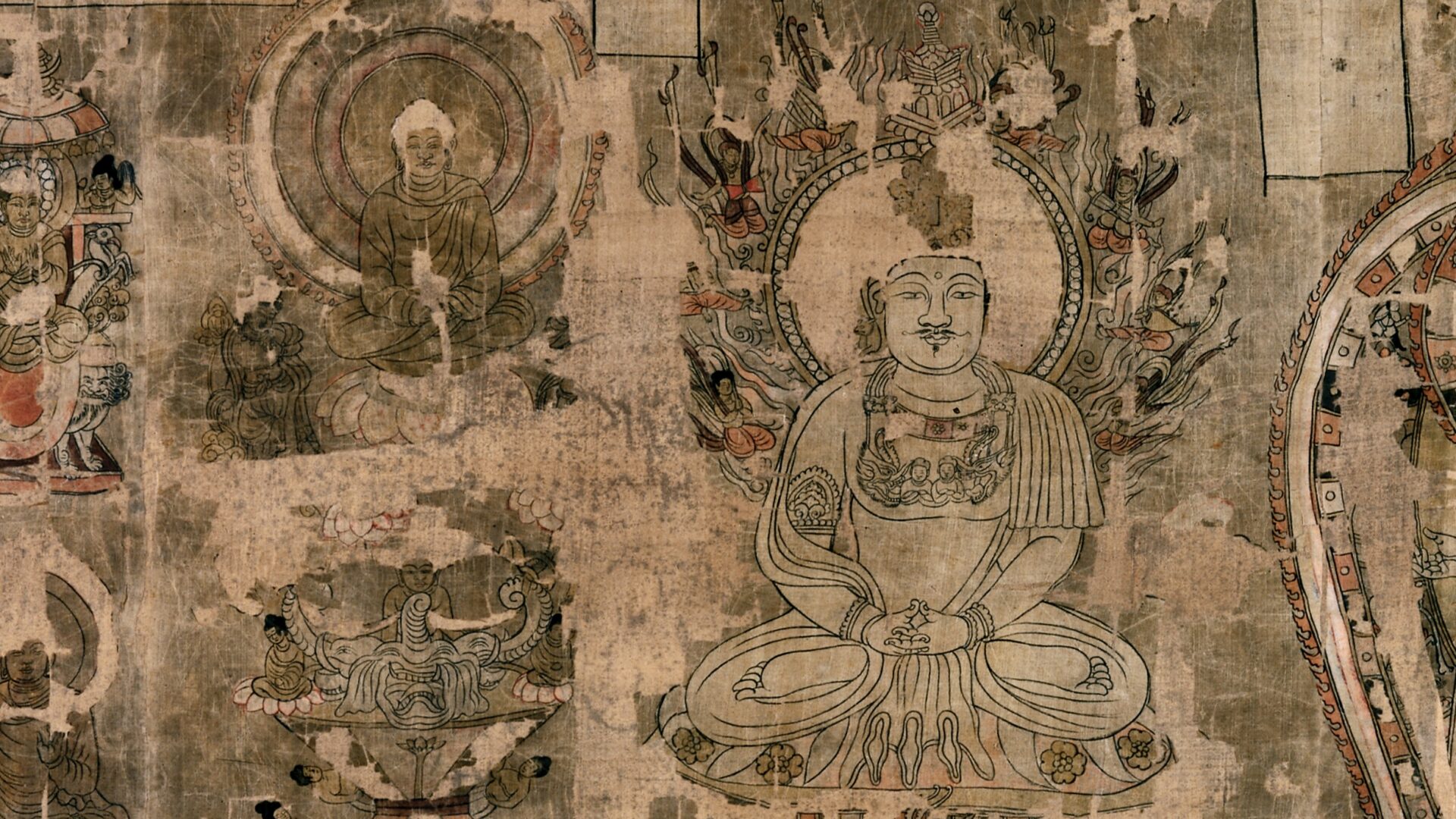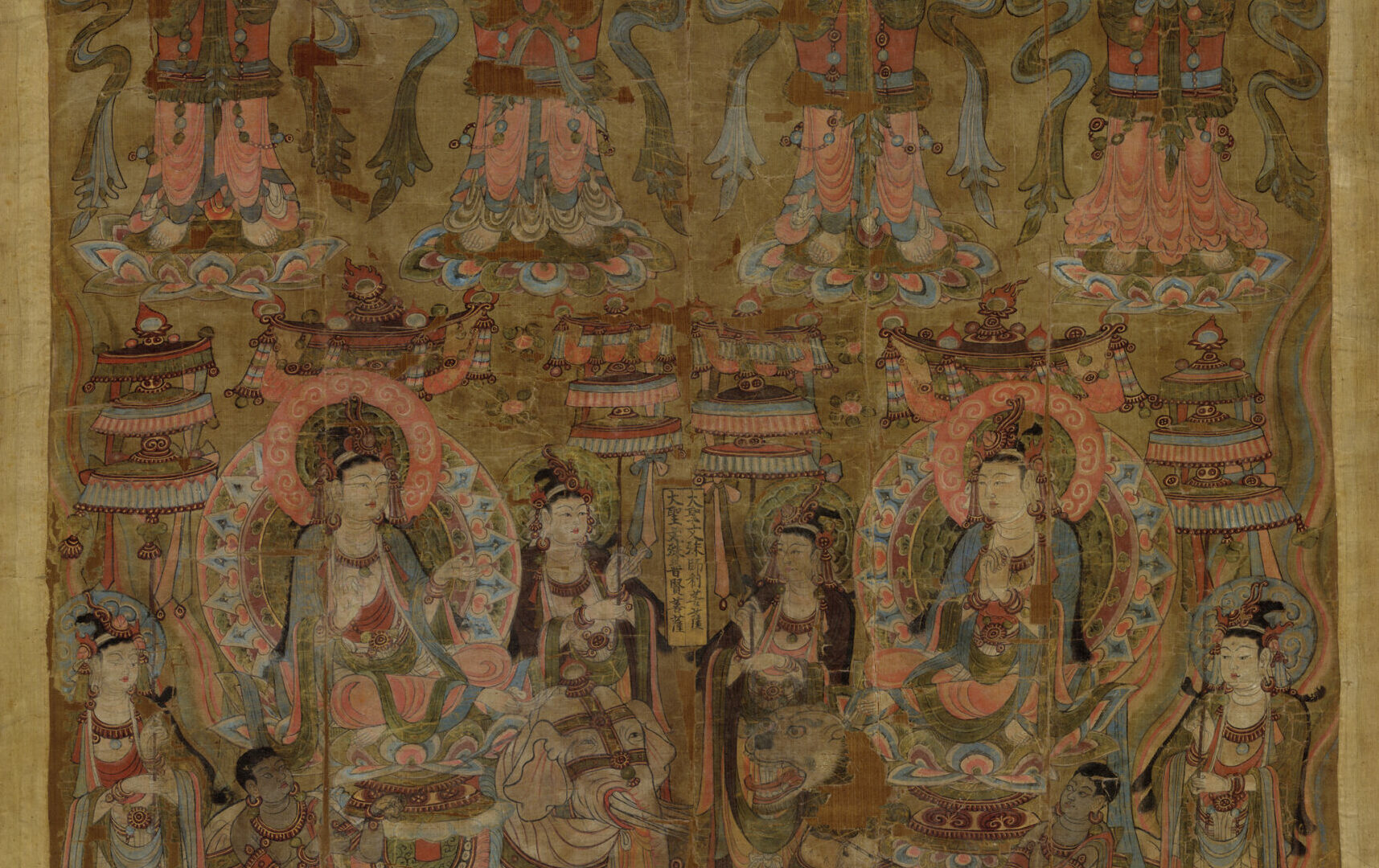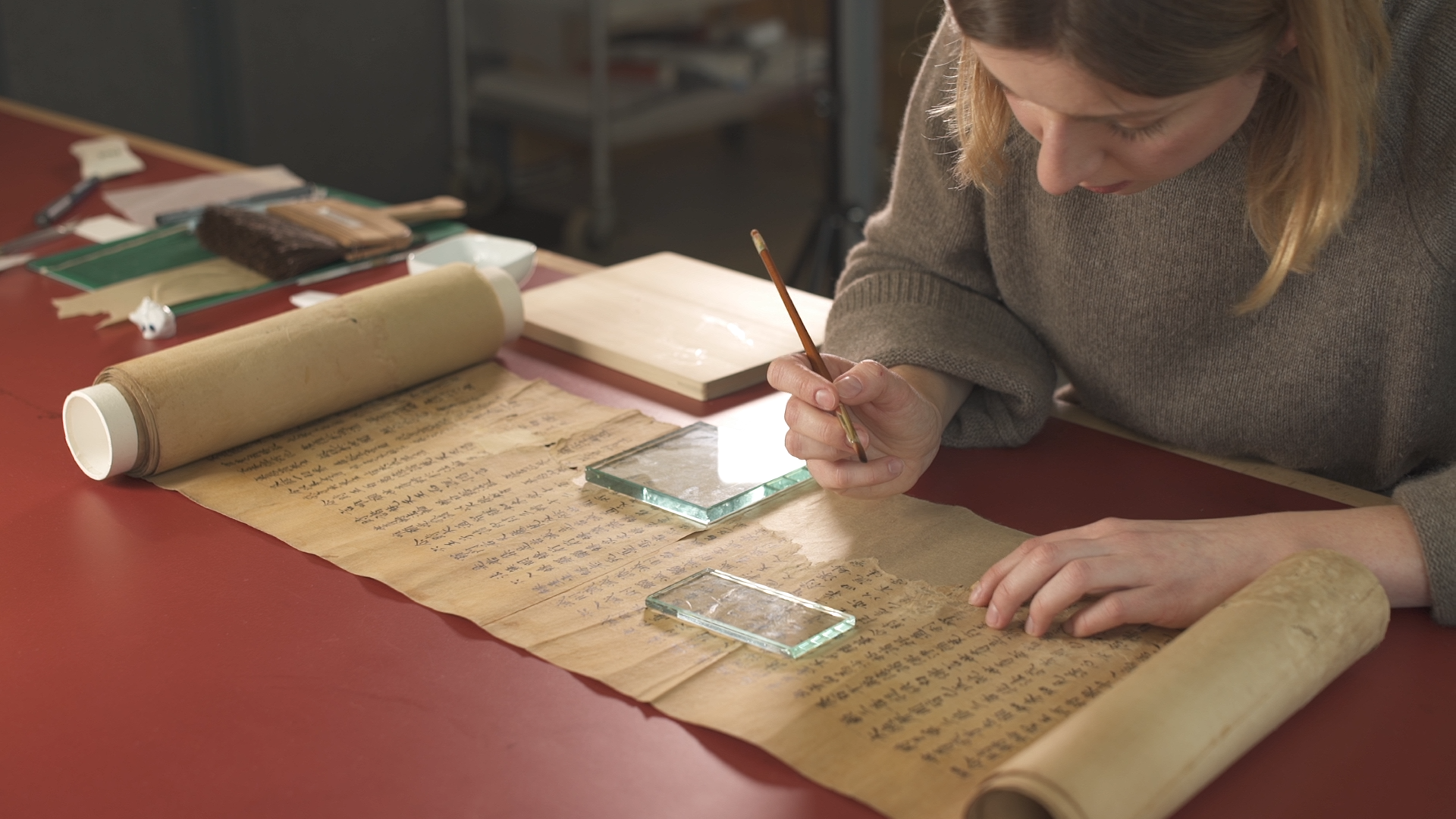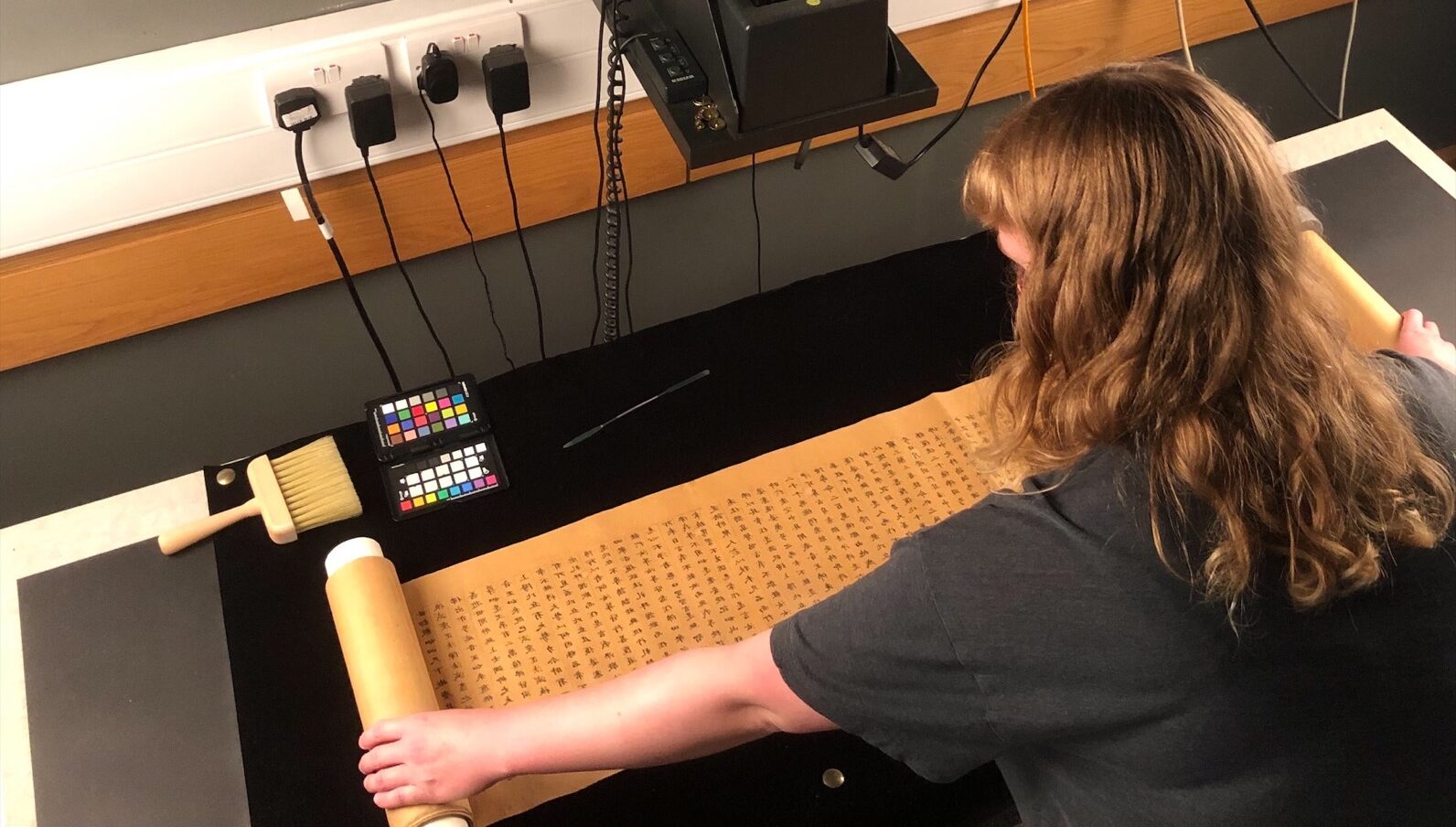Explore themes
Explore our themed resources to find out about life on the Silk Roads in depth.
Buddhism on the Silk Roads
The civilizations that flourished along the Silk Roads were open to cultural and religious influences from both East and West. Many religions gained new followers, but it was Buddhism that became the common factor uniting the different peoples of the Silk Roads.

Explore behind the scenes
Explore how IDP work with our collections the work that takes place behind the scenes at IDP.


